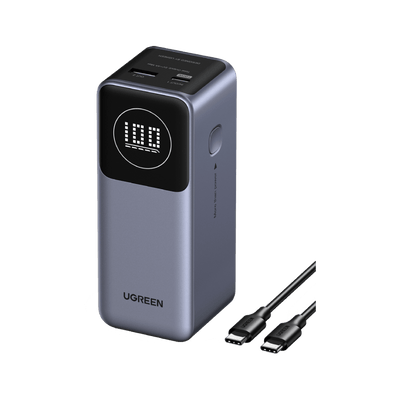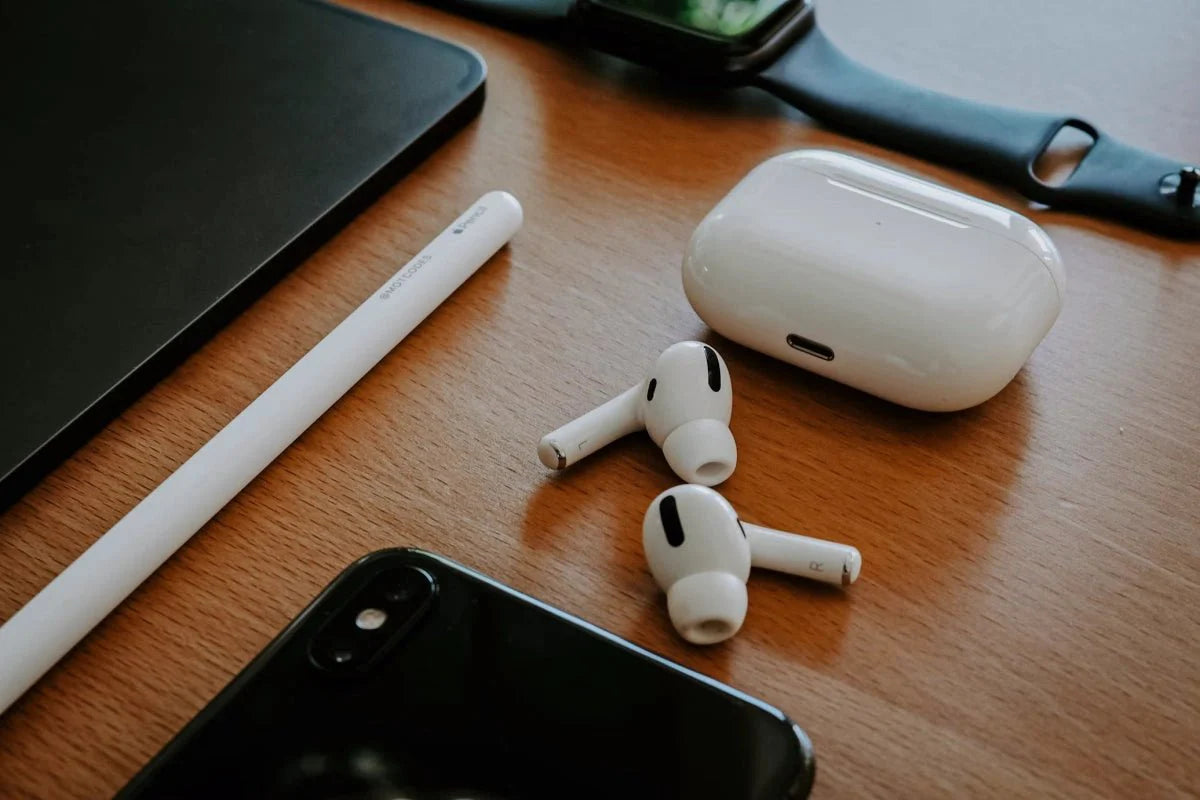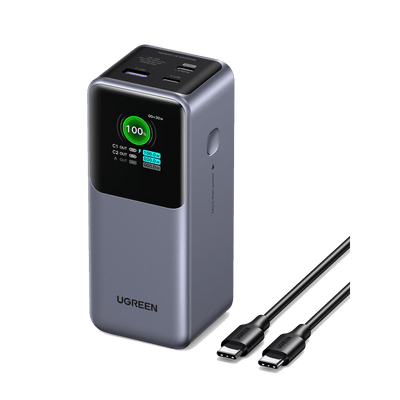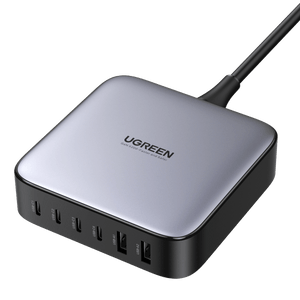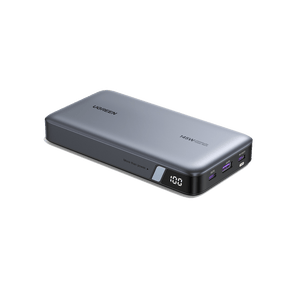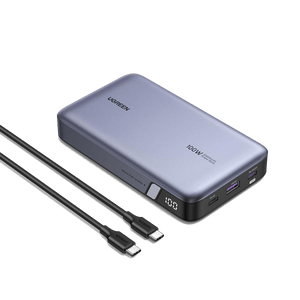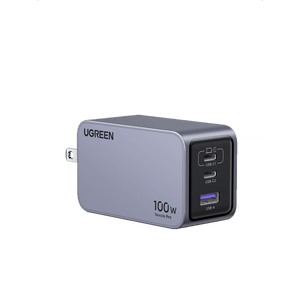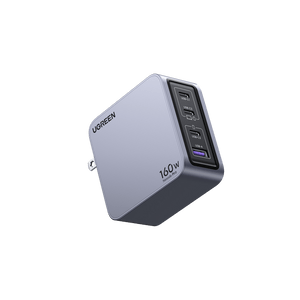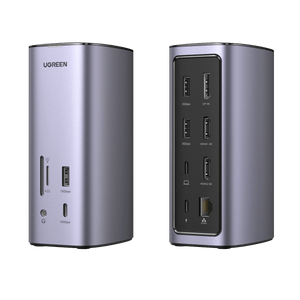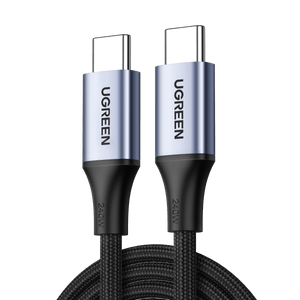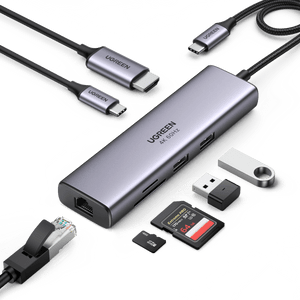Power Bank: 10,000 mAh vs. 20,000 mAh
Ever found yourself stuck with a dead phone and no outlet in sight? That’s where a trusty power bank saves the day. But here’s the big question: how big should you go? Specifically, should you go for a 10,000 mAh or a 20,000 mAh power bank? It really depends on how much juice you need and how much weight you’re willing to carry. Let’s make it simple and help you figure out which one’s the best fit for you!
Quick Look at 10,000 mAh vs. 20,000 mAh Power Bank
The significant contrast lies in many areas, including capacity, portability, recharge time, and cost.
- A 10,000 mAh power bank charges fewer devices or for a shorter time, while 20,000 mAh can charge most devices multiple times.
- Smaller capacity models are compact and lightweight, while larger ones are bulkier but powerful.
- A 20,000 mAh model often requires double the charging time compared to a 10,000 mAh model.
- 10,000 mAh power banks are typically budget-friendly, while 20,000 mAh options are an investment for extended power needs.
What Can a 10,000 mAh Power Bank Charge?
A 10,000 mAh power bank serves as a reliable choice for light to moderate device charging.
- Smartphones: Charges a 3,000 mAh battery up to three times; each charge may take 1.5 to 2 hours, depending on the Portable Chargers output.
- Tablets: Offers one complete charge for a 7,000 mAh tablet, taking about 3 to 4 hours.
- Small Accessories: Easily charges wireless earbuds or smartwatches several times.
The compact design and moderate capacity make a 10,000 mAh power bank ideal for daily commuters, students, or light travelers who rely on a single device.
{{UGPRODUCT}}
What Can a 20,000 mAh Power Bank Charge?
A 20,000 mAh Portable Chargers is designed for heavy users or those managing multiple gadgets.
- Smartphones: Fully charges a 3,000 mAh battery about six to seven times, taking the same 1,5 to 2 hours per charge as a 10,000 mAh model.
- Tablets: Provides about three full charges for a 7,000 mAh tablet.
- Laptops: Handles one full recharge for many USB-C-compatible laptops.
- Small Accessories: Recharges wireless earbuds or fitness trackers dozens of times.
Although its larger size and weight may slightly affect portability, the long-lasting power makes it indispensable for professionals, travelers, and adventurers requiring consistent energy.
{{UGPRODUCT}}
10,000 mAh vs. 20,000 mAh Portable Chargers: How to Choose
Choosing between a 10,000 mAh and a 20,000 mAh power bank depends on your specific needs:
You Should Choose a 10,000 mAh Power Bank If…
- You use your devices occasionally or only need power for emergencies. Ideal for people who only charge their devices once or twice a day, such as during commutes or short outings. Perfect as a backup for low-battery situations.
- You primarily use one device. Best for single-device users like smartphone owners or those who need to charge accessories like earbuds or smartwatches. Charges a typical 3,000 mAh smartphone battery about three times.
- You prioritize portability and lightweight design.Compact and easy to carry in your pocket, purse, or small bag. Suitable for those who value mobility over extended power capacity.
- You’re on a budget. Affordable option for casual or occasional charging needs. Offers great value for users who don’t require high-capacity features.
You’d be Better With a 20,000 mAh Power Bank If…
- You use devices frequently or rely on them for extended periods. Designed for heavy users, such as frequent travelers, professionals, or gamers. Keeps smartphones, tablets, or other gadgets charged throughout the day or multiple days without needing a recharge.
- You have multiple devices to charge. Ideal for users managing smartphones, tablets, cameras, or laptops at the same time. Can handle charging larger devices like tablets (up to 7,000 mAh) three times or more.
- You need extended power for outdoor or travel situations. Perfect for trips, camping, or situations where charging outlets are unavailable. Provides peace of mind during long flights or road trips. Click to read more: Can You Take a Power Bank on a Plane?
- You don’t mind carrying a slightly bulkier device. While less portable due to its larger size and weight, the trade-off is significantly higher capacity. Fits well in backpacks or bags for those who don’t need to carry it in hand or pocket.
When Should You Consider a 20,000+ mAh Power Bank?
Choosing a Portable Chargers with a capacity exceeding 20,000 mAh is justified in scenarios requiring extended power reserves or high-power devices:
- Long-Duration Trips: Ideal for international travel or camping where access to electricity is scarce.
- Multiple High-Capacity Devices: For users managing laptops, tablets, cameras, or drones simultaneously.
- Emergency Preparedness: Keeps devices charged during outages or emergencies lasting several days.
- Outdoor Professionals: Photographers, videographers, or field researchers often rely on such power banks for continuous energy supply.
Final Words
Selecting between a 10,000 mAh and a 20,000 mAh power bank boils down to personal habits and energy requirements. A smaller model offers lightweight convenience for casual use, while the larger option delivers enduring power for demanding circumstances. Understanding these differences allows you to choose the perfect Portable Chargers, keeping your devices ready whenever and wherever needed.
To maximize the longevity and efficiency of your chosen power bank, whether it's a 10,000 mAh or a 20,000 mAh model, it's crucial to follow proper maintenance and usage tips. For a detailed guide on extending the lifespan of your power bank, you can refer to our comprehensive article on power bank maintenance.
FAQs
How many times can a 10,000 mAh power bank charge a smartphone?
A 10,000 mAh power bank can charge a typical smartphone (with a 3,000 mAh battery) approximately 2 to 3 times. However, actual performance may vary due to energy loss during charging and the power bank’s efficiency.
Can a 10,000 mAh power bank charge a tablet?
Yes, a 10,000 mAh power bank can charge a tablet, but it may not provide a full charge for larger tablets. For instance, a tablet with a 7,000 mAh battery might receive about one full charge.
How long does it take to recharge a 20,000 mAh power bank?
Recharging a 20,000 mAh Portable Chargers typically takes 6 to 10 hours, depending on the charger’s output and the power bank’s input specifications. But things are different if you choose a fast-recharging Portable Chargers, like the UGREEN 100W 20000mAh Power Bank. It can reach 50% battery in 45 minutes.
Are 20,000 mAh power banks allowed on airplanes?
Yes, most airlines permit Portable Chargers up to 27,000 mAh (100 Wh) in carry-on luggage. It’s advisable to check with your airline for specific regulations before traveling.
Do larger-capacity power banks charge devices faster?
Not necessarily. Charging speed depends on the power bank’s output rating (measured in amperes) and the device’s charging capabilities. Some high-capacity power banks support fast-charging technologies, but capacity alone doesn’t determine charging speed.
How much does a 20,000 mAh power bank weigh compared to a 10,000 mAh one?
A 20,000 mAh power bank typically weighs between 350 to 500 grams, while a 10,000 mAh model weighs around 200 to 300 grams.
Is it safe to use a power bank while it’s recharging?
It’s possible…but it can generate heat and potentially reduce the lifespan of both the power bank and the device. Click to learn more:Why Does My Phone Get Hot While Charging?
Can a 20,000 mAh power bank charge a laptop?
Yes, many 20,000 mAh power banks can charge laptops, especially those with USB-C ports supporting Power Delivery (PD).
Do power banks lose charge when not in use?
Yes, Portable Chargers can lose charge over time even when not in use, a phenomenon known as self-discharge. The rate varies by model and storage conditions but is generally minimal over short periods. ”
